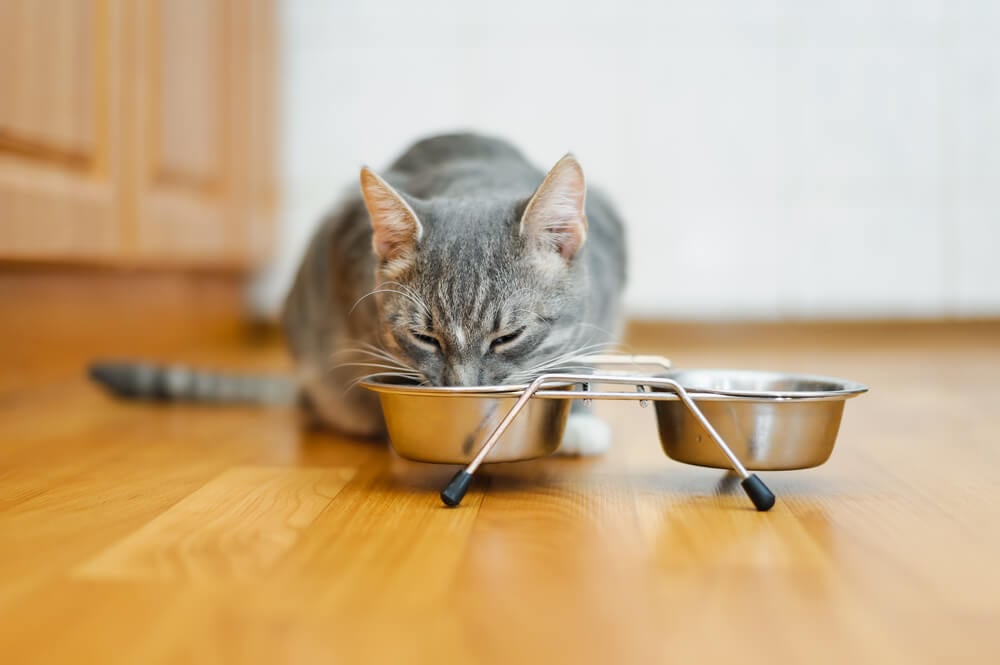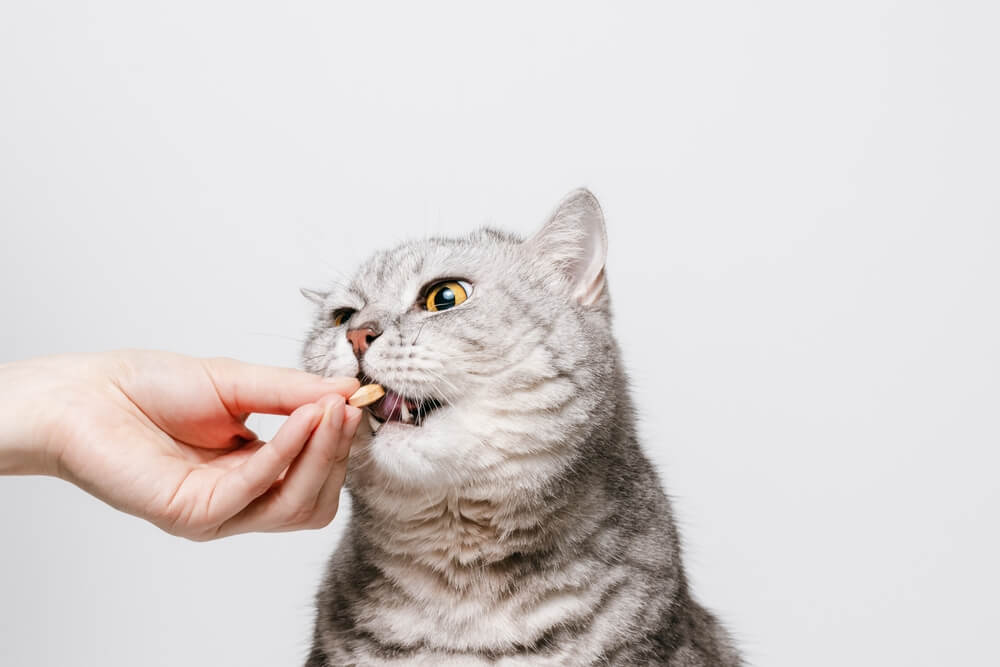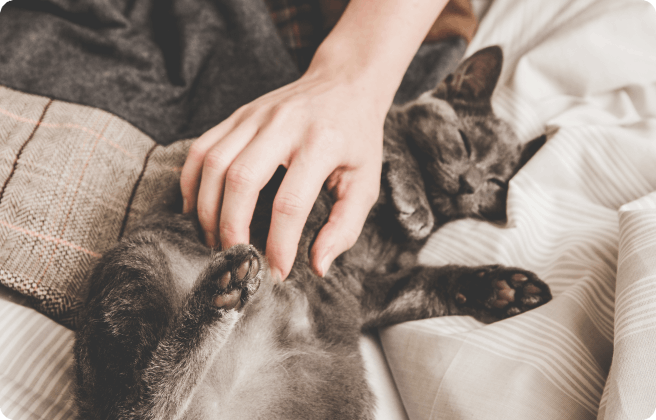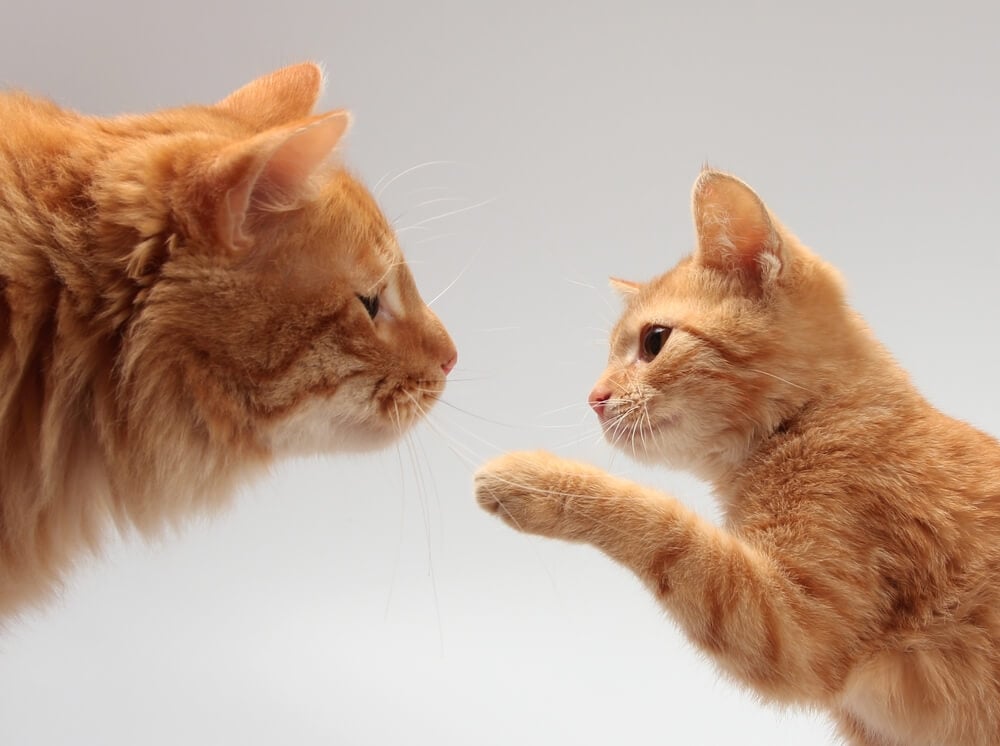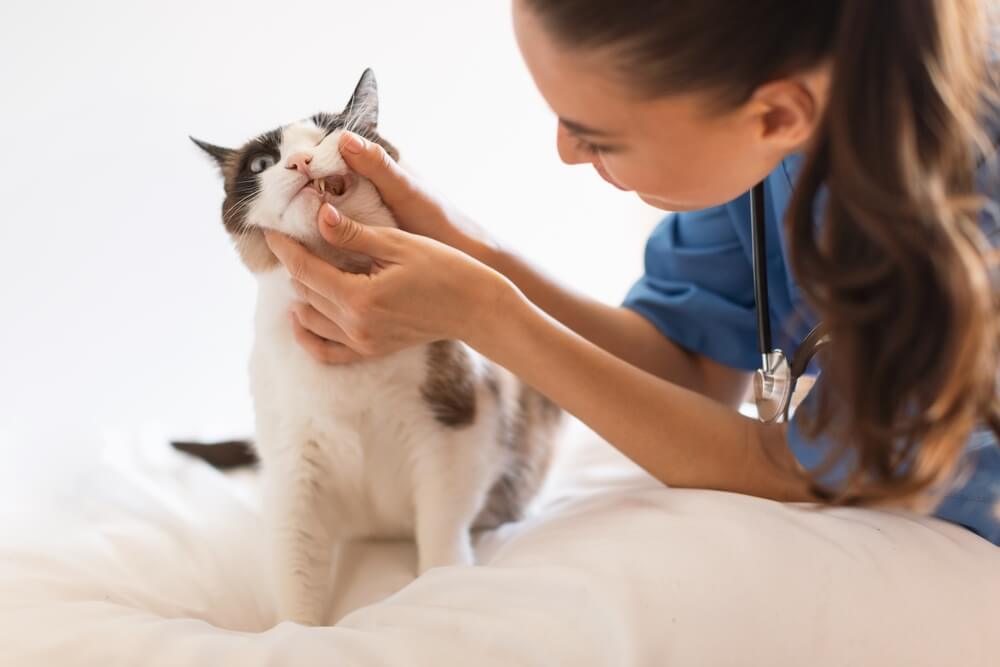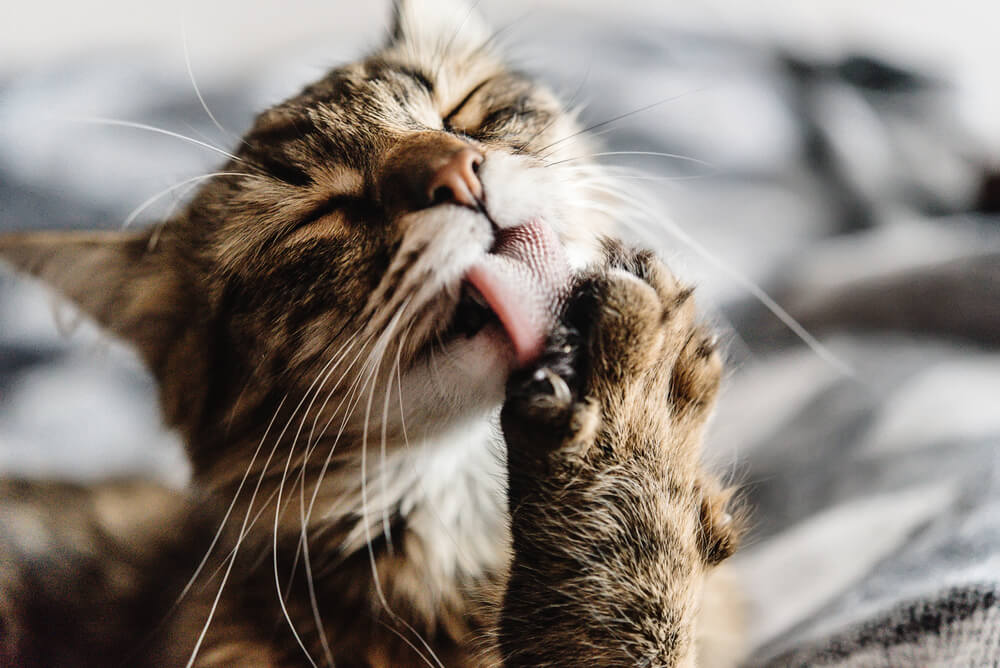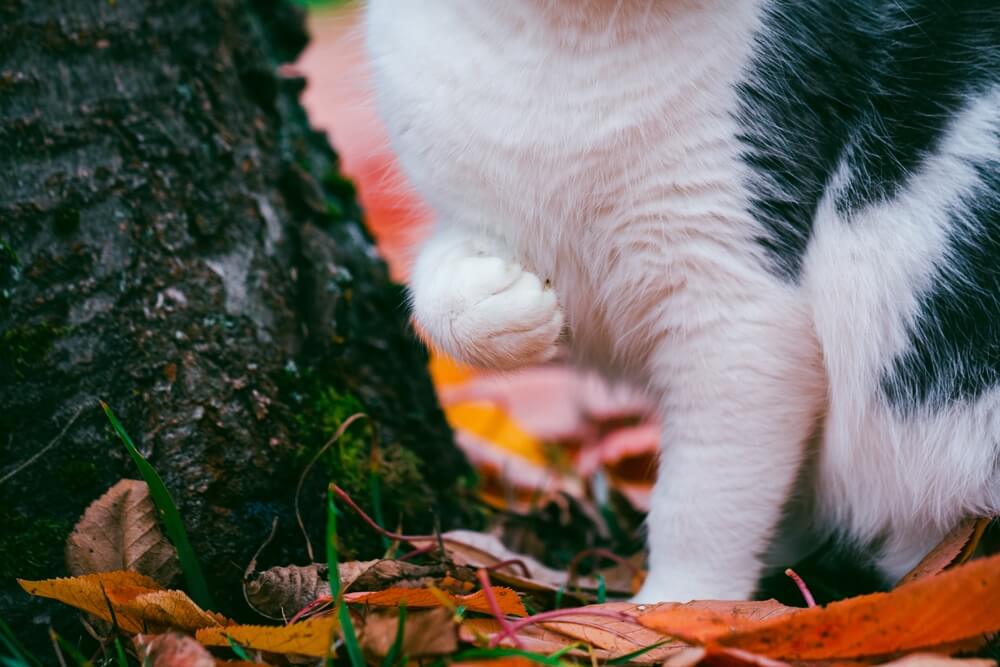
Cats are known for their agile movements and frequent acrobatics, so it can be quite heartbreaking if you notice a change in your cat’s mobility or temperament.
If you notice your cat slowing down and not participating in their usual activity, chronic discomfort could be to blame.
As cat parents, it’s a good idea to familiarize yourself with common joint conditions and understand how to help your cat age with as much mobility as possible.
How do I know if my cat has sore joints?
Identifying joint pain in cats can be challenging as they are experts at masking pain. However, there are several signs to watch out for:
- Reduced mobility: Cats with arthritis may have difficulty jumping up or down from furniture or navigating stairs.
- Reduced activity: Arthritic cats may become less active, preferring to rest or sleep for extended periods.
- Reduced grooming: Cats in pain may spend less time grooming themselves, leading to a dull or unkempt coat.
- Attitude change: Cats with arthritis may become irritable or aggressive, especially when touched or handled.
- Limping: Your cat may favor one side or leg and limping is apparent.
- Vocalizing or crying: You hear your cat crying out with unusual vocalizing
- Swollen or hot joints: Joints may be inflamed and hot to touch.
- Difficulty using the litter box: If your cat is having frequent accidents and is unable to use their litter box, they could have sore joints.
Types of joint pain in cats
Feline Osteoarthritis
Also known as arthritis, this is the most common joint pain seen in both humans and pets. It is a chronic, painful, progressive condition, and although it tends to develop in older cats, cats of all ages can suffer from arthritis.
The cartilage that normally lines and cushions the joint breaks down, allowing bones to rub together abnormally. The nearby bone may splinter and form sharp, bony projections into the joint. These lead to swelling, inflammation, and pain in the joints.
What causes arthritis in cats?
Several factors can contribute to the development of arthritis in cats, including:
- Wear and tear: Joints may weaken with age, leading to arthritis.
- Abnormalities: Cats with abnormal hip development or joint structure are at higher risk.
- Injury: Joint fractures or injuries can predispose cats to arthritis.
- Obesity: While not a direct cause, obesity can exacerbate arthritis symptoms.
- Genetics: Certain cat breeds may be more prone to arthritis due to genetic factors.
Patellar Luxation
A luxating patella refers to a chronically dislocating kneecap which can be caused by blunt physical trauma or a congenital defect. Although this condition is more common in dogs, cats can also experience patellar luxation.
If caused by physical trauma, the signs of a luxating patella will become suddenly evident. If, on the other hand, the cause is a genetically inherited defect, the signs will slowly emerge and gradually evolve into lameness as an affected cat grows older. The disorder is usually diagnosed through a physical exam and then confirmed by x-ray.
Hip Dysplasia
Hip dysplasia is again more common in dogs but cat owners should be aware of the signs and symptoms as it’s not entirely rare in cats, especially purebred felines.
Hip dysplasia occurs when the ball joint of the femur and the pelvic socket don’t fit together properly. This can result in painful hips and may eventually lead to osteoarthritis.
There is no specific cause of this condition, although the condition is widely thought to be genetic since it’s more prevalent in certain breeds.
Acute Joint Injuries
Joint issues can stem from a scuffle or catfight so keep an eye out for swollen joints, limping, and personality changes if your cat is a bit worse for the wear.
High-energy jumping and pouncing can also lead to tissue damage and stress fractures but these injuries are usually very treatable.
How Veterinarians Diagnose Arthritis in Cats
If you think your cat is experiencing any of the above joint pain symptoms, it’s a good idea to visit the vet for a check-up.
Veterinarians diagnose arthritis in cats through a combination of physical examination, imaging tests like X-rays, and observing the cat’s behavior and mobility.
They will be able to detect exactly what kind of joint problem your cat is experiencing and advise next steps.
Treatment of Arthritis in Cats
Your vet will recommend the best treatments which may include:
- Non-steroidal anti-inflammatory drugs (NSAIDs) to reduce pain and inflammation.
- Pain management medication for cats unable to tolerate NSAIDs.
- Injectable joint protectants to alleviate arthritic pain.
- Acupuncture or cold laser therapy for pain relief.
Can I prevent my cat’s joint pain?
You may not be able to prevent your cat from developing arthritis, especially as they age. But, a complete and balanced diet, regular exercise, and regular vet check-ups are the most optimal ways of preventing or slowing down joint pain.
Cat foods which contain omega-3 fatty acids, glucosamine and chondroitin may help too. See our list of the Best Cat Foods for Joint Health to inspire you.
There are certain supplements available that you may wish to try but it’s always best to speak to your vet before introducing them to your cat’s diet.
How can I help my cat’s joints at home?
Although you might not be able to stop your cat from experiencing joint pain, you can help them out around the house. One of the best ways to help a cat who has arthritis is to create a comfortable environment for them that’s also safe. You can do this by:
- Giving your cat a soft, warm bed that is easy for your cat to get into and out of
- Providing a ramp up to places they like to rest — such as your bed, a couch, or a window seat
- Providing a litter box with one low side for easy access
- Keeping everything your cat needs — like the litter box, food, and water — on one floor of your house
- Using soft brushes for grooming
- Helping them maintain a healthy weight to put less stress on their joints
While there isn’t always an easy solution and unfortunately as cats age, they may experience joint pain. However, understanding the symptoms, providing your cat with a healthy lifestyle, and making them feel comfortable if experiencing pain will make their lives a whole lot easier.
We uphold the highest editorial standards when creating the authoritative content pet parents rely on and trust.
Every piece of clinical content on the Cat Food Advisor is reviewed by our certified Veterinary Advisory Board, which consists of licensed veterinarians and medically certified specialists.
Our reviews are completely independent; we are not paid by any pet food company to promote their products favorably. We do not accept money, gifts, samples or other incentives in exchange for special consideration. For more information see our Disclaimer & Disclosure page.




